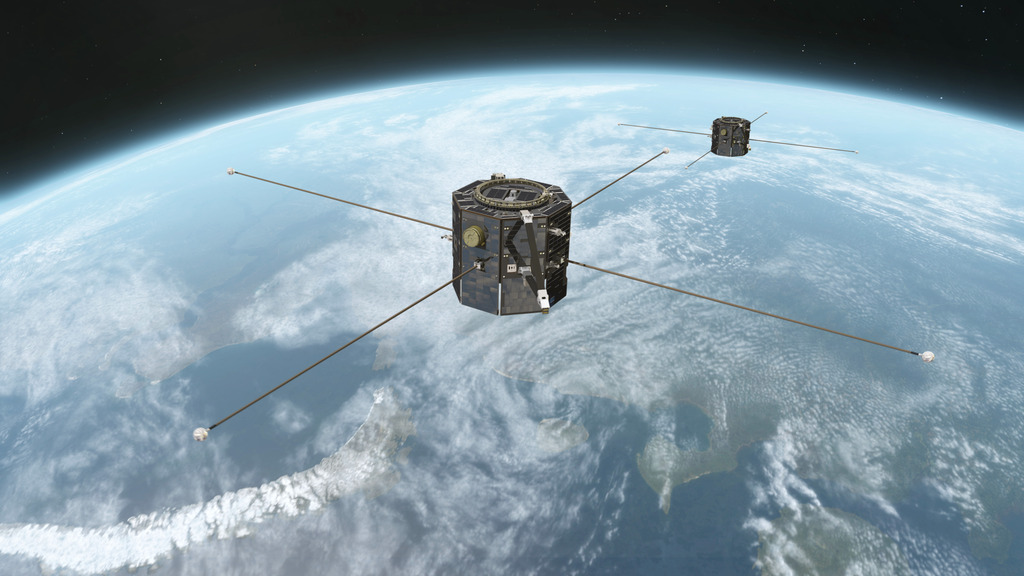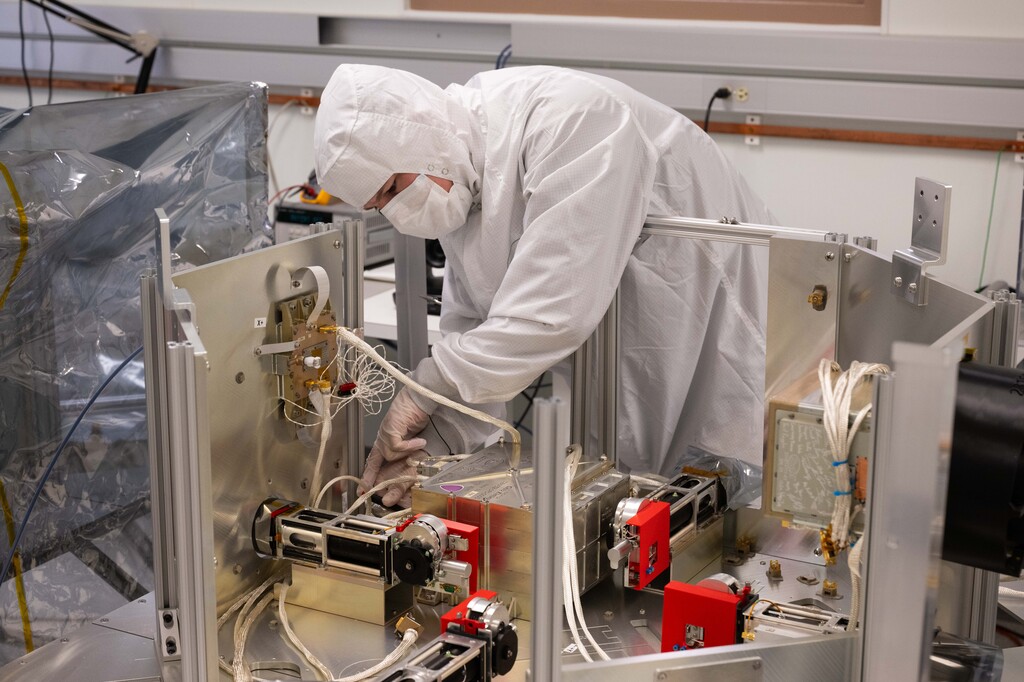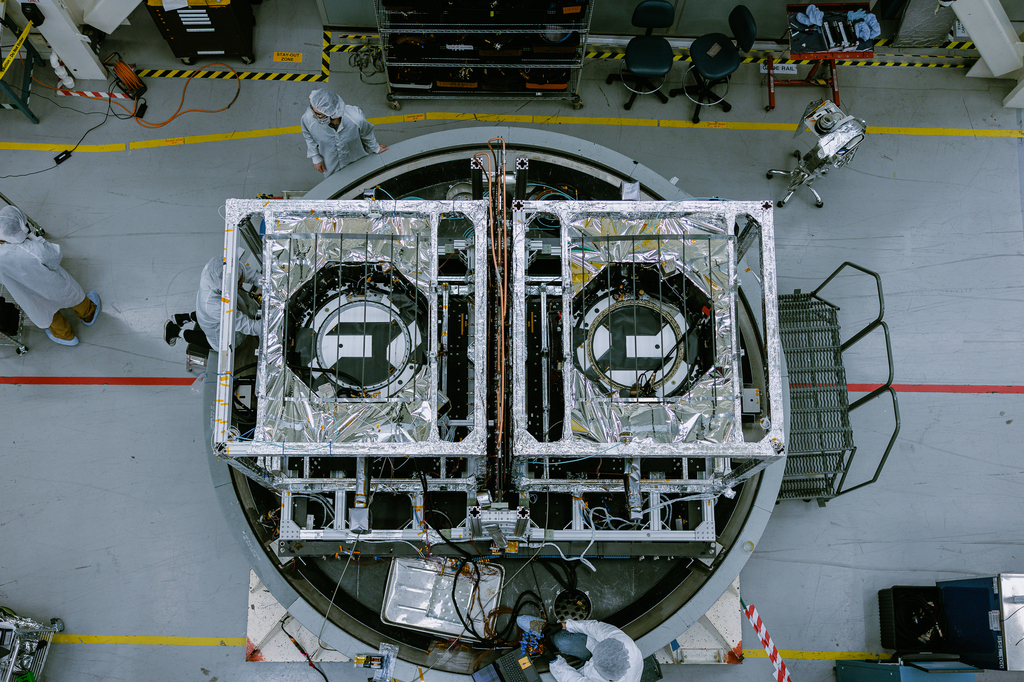TRACERS
Overview
NASA’s Tandem Reconnection and Cusp Electrodynamics Reconnaissance Satellites, or TRACERS mission, consists of two satellites that will help understand magnetic reconnection and its effects in Earth’s atmosphere. Magnetic reconnection occurs when activity from the Sun interacts with Earth’s magnetic field. By understanding this process, scientists will be able to better understand and prepare for impacts of solar activity on Earth.
The TRACERS mission is led by David Miles at the University of Iowa and managed by the Southwest Research Institute in San Antonio. NASA’s Heliophysics Explorers Program Office at the agency’s Goddard Space Flight Center in Greenbelt, Maryland, provides mission oversight to the project for the agency’s Heliophysics Division at NASA Headquarters in Washington.
Learn more about the mission: https://science.nasa.gov/mission/tracers/
TRACERS Imagery
TRACERS Spacecraft Beauty Passes
Go to this pageTRACERS, or the Tandem Reconnection and Cusp Electrodynamics Reconnaissance Satellites, will help understand magnetic reconnection and its effects in Earth’s atmosphere. Magnetic reconnection occurs when activity from the Sun interacts with Earth’s magnetic field. By understanding this process, scientists will be able to better understand and prepare for impacts of solar activity on Earth.Learn more about the mission: https://science.nasa.gov/mission/tracers/ ||
TRACERS Instrument Development & Testing at the University of Iowa
Go to this pageNASA’s Tandem Reconnection and Cusp Electrodynamics Reconnaissance Satellites, or TRACERS, is embarking on its integration and testing campaign, during which all of the instruments and components will be added to the spacecraft structure, tested to ensure they will survive the harsh environments of launch and space, and made ready to execute its mission. TRACERS will help understand magnetic reconnection and its effects in Earth’s atmosphere. Magnetic reconnection occurs when activity from the Sun interacts with Earth’s magnetic field. By understanding this process, scientists will be able to better understand and prepare for impacts of solar activity on Earth.Below are clips of TRACERS’ instrument design, build, and testing at the University of Iowa in Iowa City, Iowa.Learn more about the mission: https://science.nasa.gov/mission/tracers/ ||
TRACERS Testing & Integration at Millennium Space Systems
Go to this pageNASA’s Tandem Reconnection and Cusp Electrodynamics Reconnaissance Satellites, or TRACERS, is embarking on its integration and testing campaign, during which all of the instruments and components will be added to the spacecraft structure, tested to ensure they will survive the harsh environments of launch and space, and made ready to execute its mission. TRACERS will help understand magnetic reconnection and its effects in Earth’s atmosphere. Magnetic reconnection occurs when activity from the Sun interacts with Earth’s magnetic field. By understanding this process, scientists will be able to better understand and prepare for impacts of solar activity on Earth.Below are clips of TRACERS’ testing and integration at the Millennium Space Systems Small Satellite Factory in El Segundo, California. Learn more about the mission: https://science.nasa.gov/mission/tracers/ ||
TRACERS Thermal Vacuum Testing at Millennium Space Systems
Go to this pageNASA’s Tandem Reconnection and Cusp Electrodynamics Reconnaissance Satellites, or TRACERS, is embarking on its integration and testing campaign, during which all of the instruments and components will be added to the spacecraft structure, tested to ensure they will survive the harsh environments of launch and space, and made ready to execute its mission. TRACERS will help understand magnetic reconnection and its effects in Earth’s atmosphere. Magnetic reconnection occurs when activity from the Sun interacts with Earth’s magnetic field. By understanding this process, scientists will be able to better understand and prepare for impacts of solar activity on Earth.Below are clips of Millennium Space Systems’ team members conducting Thermal Vacuum (TVAC) testing at the Boeing Space Systems Laboratory in El Segundo, California.Learn more about the mission: https://science.nasa.gov/mission/tracers/ ||



